| Home |
| Acknowledgments |
| Conventions |
| Glossary |
| Maps |
| References |
| Links |
| Articles |
| Thumbnails |
| Species
list |
| Family |
| Next
species |
Additional Photos

underside
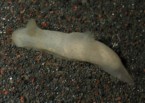
side
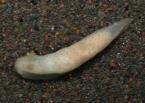
more orange
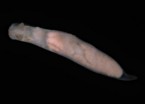
after feeding?

with parasite?
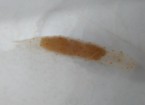
young
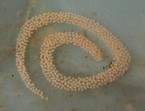
egg mass
_______________
GALLERY

Gymnodoris sp. #7
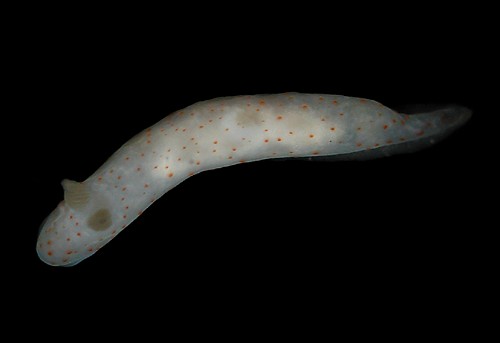
| Maximum size: 15 mm. Identification: This species varies from cream to pale pink with pale orange spots. The cephalic hood is narrow and triangular. The gills are simple, form an incomplete circle and rarely have orange on the rachis. The rhinophores are sometimes tipped with small, pale-orange spots. The smaller and lighter orange spots distinguish it from Gymnodoris alba. (Note 1) (Note 2) Natural history: Gymnodoris sp. #7 is a moderately common species found in protected to exposed rocky habitats from < 1 to 6 m (< 3 to 20 ft). Rarely, it can be found in Halimeda kanaloana beds to 12 m (39 ft). Kay (1979) states that it feeds on aeolids of the genera Favorinus and Aeolidiella. It lays a pale orange, spiral egg mass that hatches in about 7 days in the laboratory. Distribution: Big Island, Maui, Oahu, Kauai(?) and Midway: also found in French Polynesia. Taxonomic notes: It was probably first reported from Hawaii in Kay & Young, 1969 (as Gymnodoris alba). It is listed in Kay, 1979 as G. alba. There remains some chance that more than one species are lumped under this name. Photo: CP: 6 mm: Kapalua Bay, Maui; April 3, 2007. Observations and comments: Note 1: The two animals illustrated as "after feeding" (see photos) have more strongly inflated bodies with better defined internal masses than other animals. It seems likely that they have just fed recently (the second animal regurgitated a large amount of brownish material three days after capture and appeared more normal after doing so). However, their somewhat atypical appearance might also be due to a disease or parasites. Note 2: An unusual animal with a pink internal mass and radiating white bands might also be carrying a parasite. Or, perhaps the differences are due to its reproductive stage since it also appears to be carrying eggs? (see photo) |
| Thumbnails |
Species
list |
Family | Next species | Top |